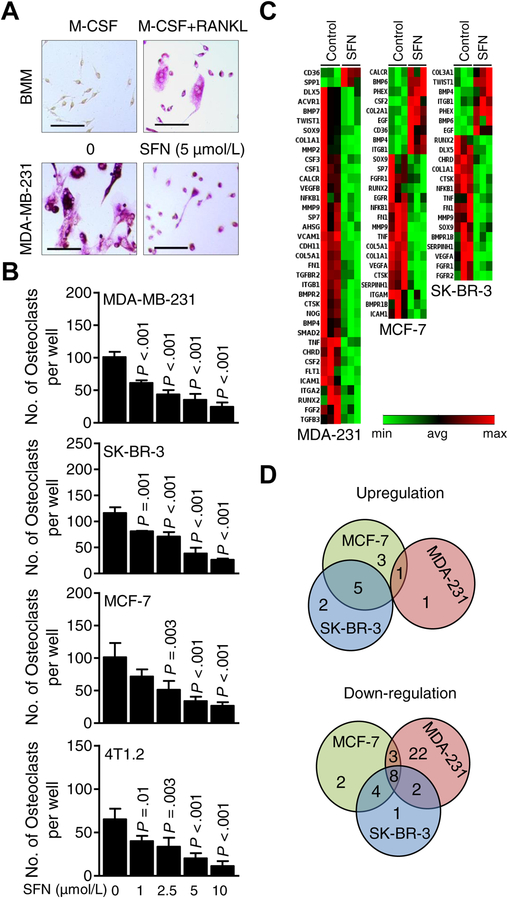Figure 1.
Sulforaphane (SFN) treatment suppressed breast cancer cell-induced osteoclastogenesis in vitro by downregulating key bone remodeling genes. A, Representative microscopic images of bone marrow monocytes (BMM) and tartrate-resistant acid phosphatase positive (TRAP+) multinucleated osteoclast cells resulting from exposure of BMM to macrophage-colony stimulating factor (M-CSF) + receptor activator of nuclear factor κ-B ligand (RANKL) with or without treatment with SFN (scale bar = 150 μm, ×20 objective magnification). B, Quantitation of the number of osteoclasts per well for data shown in panel A. Multi-nucleated (nuclei > 3) TRAP+ cells were counted. Results shown are mean ± SD (n=3). Statistical significance of difference was analyzed by one-way analysis of variance (ANOVA) followed by Dunnett’s multiple test. The experiments were repeated twice, and the results were consistent. C, Heat maps showing the patterns of gene expressions in MDA-MB-231 (MDA-231), MCF-7, and SK-BR-3 cells after 24 hours of treatment with dimethyl sulfoxide (DMSO) or 5 μmol/L SFN. The cutoff was ≥ 1.3-fold change in expression with a P < 0.08. D, Venn diagrams showing the upregulated and down-regulated genes in response to SFN treatment.

